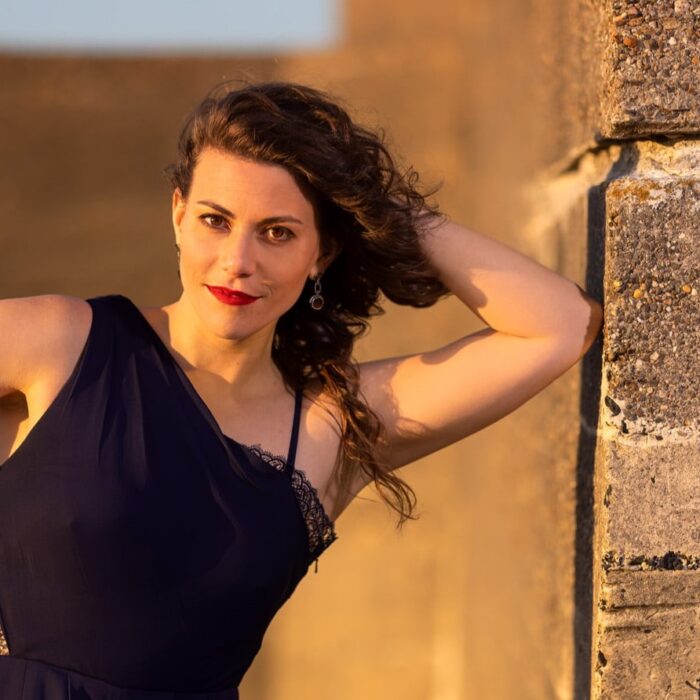
Interview: A Look Into The Hungarian State Opera’s New York Tour
Hungarian Stars on ‘The Queen of Sheba,” Bartok’s Masterpiece & Hungary’s Favored Opera
By David SalazarIt’s not every day that New York audiences will get a chance to experience the Hungarian State Opera without heading across the pond.
But in just a few weeks, starting on Oct. 30, 2018, they will get that very opportunity at the David H. Koch Theater in Lincoln Center as the company comes on tour with a number of operatic gems from the Hungarian repertoire.
“The New Your tour is an excellent opportunity to introduce the company,” General Director Szilveszter Okovács told OperaWire. “We are curious how an American metropolis with such renowned operatic traditions will welcome us, and what they will find interesting from a segment of Hungarian opera only heard on recordings, if ever.”
The Hungarian State Opera had been in New York in 2016 when it took part in a concert to commemorate the 60th anniversary of the 1956 revolution organized at the UN headquarters. Per Okovács, it was during this visit to New York, that the HSO became aware that it might have a chance in the future to showcase a season at the David H. Koch Theater in Lincoln Center.
At that point, the company was planning ahead with the knowledge that its 2017-18 and 2018-19 seasons would require reconstruction on the Budapest Opera House.
So in planning numerous international tours for the two seasons, the company decided on making a debut in New York.
New Ground
Of course, this kind of endeavor would require some creative programming. With the Metropolitan Opera’s season in full swing during late October and early November, Ovokäcs and company knew that it would make little to no sense in programming something from the standard repertory. Moreover, given its history, it made more sense to introduce the New York operagoing public to works from its own heritage.
Among the works chosen were Ferenc Erkel’s “Bánk Bán,” which stars Levente Molnár, Goldmark’s “The Queen of Sheba,” and a double bill featuring Vajda’s “Mario and the Magician” and Bartok’s “Bluebeard’s Castle,” in addition to many ballet performances. This will be the New York premiere of “Bánk Bán” and the first U.S. performance of Vajda’s opera.
“Ferenc Erkel’s Bánk Bán is an outstanding, early example of Hungarian opera,” Okovács noted. “It is also called our national opera, and the play the opera is based on is a work that reflects a romantic Hungarian historic thinking and national identity that continues to this very day.
“Erkel’s music is a worthy composition to augment the play. It is inspired by the Italian bel canto spiced by Erkel’s own style: mature musical inventions reflected in Hungarian music traditions.”
The General Director noted that this opera is so treasured by Hungarians that many opera societies within the country have yearned to see it become a part of the standard repertoire. Putting it on in New York seemed like the opportunity to give it that push.
Becoming Reacquainted
“The Queen of Sheba” was performed once at the Metropolitan Opera. Presented in German as “Die Königin von Saba,” the performance on Dec. 2, 1885, remains the only one of the work given at the historic house.
“’The Queen of Sheba’ by Goldmark hasn’t been staged in New York for a century although it was a very popular piece in its time, until the 1930s of Central Europe and turmoil of history swept it away,” added Okovács.
The opera will feature Erika Gál in the title role in her first-ever trip to the U.S. The mezzo has performed extensively in Hungary in a wide range of repertoire that includes the operas of Wagner, Mozart, Bizet, and Verdi, among others.
“I am looking forward to seeing the skyscrapers, the Statue of Liberty, the Metropolitan Opera, Central Park, Brooklyn Bridge, Rockefeller Center,” Gál told OperaWire. “I have learnt a lot about the architecture of the city, and I am happy to be able to see it with my own eyes.
Gál is no stranger to this opera, having performed it on numerous occasions with the Hungarian State Opera. And yet, the mezzo emphasized that it is a mere curiosity around Europe.
“Yet whenever it is staged, it is usually a big success. I hope New York won’t be an exception in this regard, either. The company of the Hungarian State Opera will do their best to achieve it.”
The romantic opera, which tells of the biblical meeting between King Solomon and the Queen of Sheba, features a leading character that Gál notes is “a beautiful woman, whose soul as a woman and queen are in conflict. Initially, she is a vain, haughty beauty, but we get to know her human side. She is ultimately ‘only’ a WOMAN, capable of everything for love. Unfortunately, it is too late for her too confess her feelings publicly.”
One intriguing feature of Gál choice for the role is that it is originally composed for a soprano, but “requires a mezzo-soprano timbre. It is a higher tessitura than what normally would be required for a dramatic mezzo-soprano… Therefore, it happens quite often that it is sung by dramatic sopranos instead.”
Familiar Territory
The final operas on the tour will be featured as part of a double bill. Of all the works actually on the schedule, this double bill features the one best-known by Americans and the one that they have yet to hear.
“Bluebeard’s Castle” has had 31 performances at the Met Opera to date, and is slated for more later this season when the company revives its production alongside Tchaikovsky’s “Iolanta.” But in this case, the company will pair the opera with János Vajda’s “Mario and the Musician.”
The former is a showpiece for soprano and in this case, New Yorkers will be able to welcome Ildikó Komlósi, who sang at the Met 25 times between 1999 and 2015 in such operas as “Die Frau ohne Schatten” and “Salome.” She has also appeared at Carnegie Hall.
Here she takes on the character of Judit, Bluebeard’s latest conquest, and a role that she has sung 177 times in her life.
“The role requires a soprano and a mezzo-soprano at the same time. Not only due to the high C,” Komlósi told OperaWire when asked about the challenges of the role. “It is a big music score. It requires a well-positioned, well-projected voice in both higher and lower registers. There are of course many other things that this fantastic piece written by Bartók requires.”
Performances kick off on Oct. 30, 2018 with “Bánk Bán” followed by a Nov. 1 performance of the Vajda / Bartok double bill. “The Queen of Sheba” will appear on Nov. 2, followed by a second performance of “Bánk Bán” on Nov. 3, 2018. The company will feature a Gala on Nov. 4 followed by performances of such ballets as “Swan Lake,” “Don Quixote,” and “LOL” on Nov. 7, 9, and 11, respectively.


